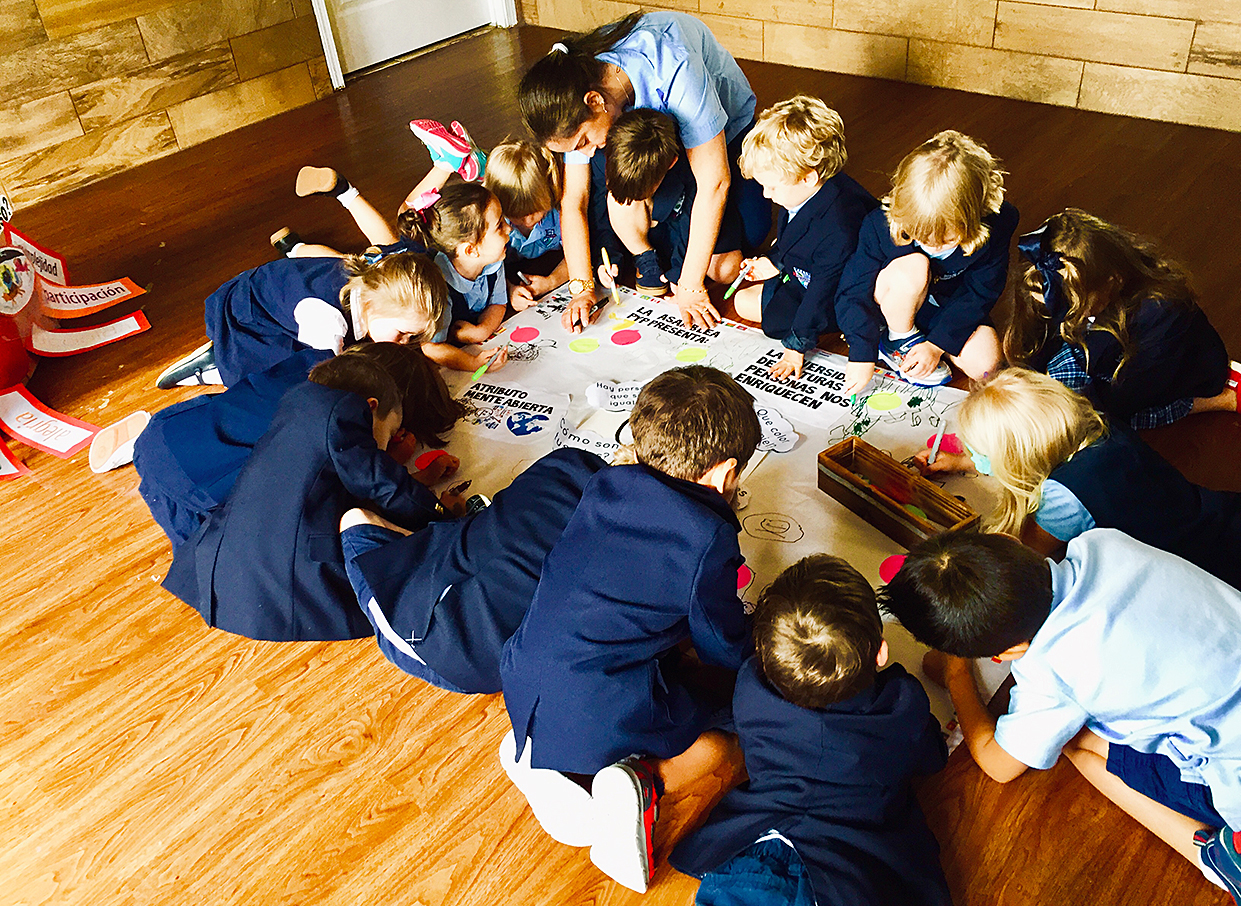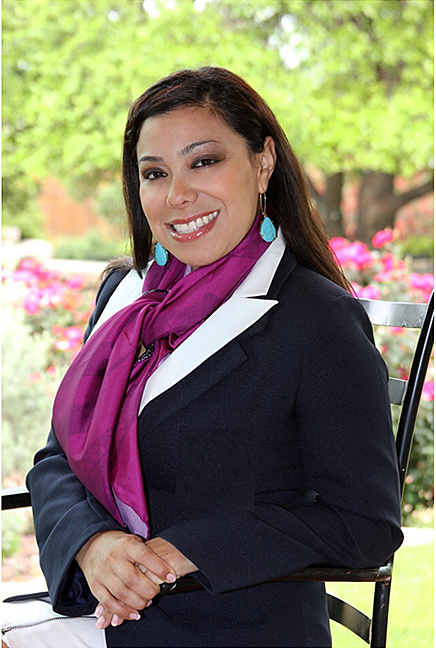Interview by Visual Collaborative
September 2019 9 min read

Adriana Rodriguez is the head of Austin Eco Bilingual School (AEBS), a school dedicated to expanding access to the highest standards of education in Austin, Texas. As a feature in our “Supernova” interview series, Rodriguez tells us about her school, its Reggio Emilia curriculum and learning modules for future leaders, its creative components, her background and commitment to family and the youth.
(VC) The creative industry plays a big part in education especially with the imaginative faculty of children. What accommodations do you make for kids who are driven mostly by the right side of their brain when their parents approach your program and school?
(Adriana) That’s a great question. Catering our educational experience to all learning styles is a central goal for our work. And it’s one of the big reasons why we have chosen to design our curriculum based in the Reggio Emilia curriculum, which is a methodology that focused on creating organic environments for children to engage with learning according to their style, strengths and interests. The Reggio Emilia method invites us as educators to create stations and activities that are very tactile and creative. And very focused on art mediums to teach a variety of holistic lessons that mix language arts, math, social development and more. So, I would say our model really invites children to get in touch with their right side of the brain whether that’s their main orientation or their orientation is more of a naturalistic, logical mathematical, artistic, special/visual, interpersonal, linguistic, etc.
Reggio Emilia has different “ateliers” workshops of art where they invite students to learn and develop all different intelligences.; list styles (naturalistic, logical mathematical, artistic, special/visual, interpersonal, linguistic, etc) Reggio creates the invitation to design a more holistic curriculum.
kids that have a sensitivity and sense of responsibility towards our human family and the earth. And a global mindset that is aware of the needs of others around the world, as well as knowing themselves agents of positive and peaceful change.
(VC) Your school has an accreditation for a International Baccalaureate program and curriculum, is this accurate? What are success stories that stand out for you with Austin Eco Bilingual School?
(Adriana) Yes, we became an International Baccalaureate accredited in 2013 and have maintained our status to this day. In 2017 we went through a rigorous evaluation visit to ensure it’s using the highest standards of teaching. According to the results, the school excelled in every category. At its core, AEBS (Austin Eco Bilingual School) fosters an inquiry and thinking based structure for learning.
I became very interested in IB in the different seminars I have attended in IB of the Americas annual conferences and Harvard Graduate school. What resonated with me most, is the importance that IB programming brings to helping raise kids that have a sensitivity and sense of responsibility towards our human family and the earth. And a global mindset that is aware of the needs of others around the world, as well as knowing themselves agents of positive and peaceful change. I felt that IB provides schools with a curriculum framework of essential elements — the knowledge, concepts, skills, attitudes, and action that young students need to equip them for successful lives, both now and in the future. The school’s uniqueness is that it uses the International Baccalaureate (IB) as the framework for the curriculum and employs the Reggio Emilia approach as the vehicle for learning. AEBS is the only Austin area school utilizing both modalities for teaching, which gives students a one-of-a-kind education.

Children actives courtesy of Austin Eco Bilingual School
A traditional early-childhood class usually has two main components: the students and the teachers. In a Reggio Emilia classroom, there are three: student, teacher, and classroom. Emilia classrooms have a personality of their own; they’re are full of life with vibrant colors, smells, and tactile tools. The classrooms act as a third teacher by helping the students step into their learning process even further by touching, smelling and seeing.
We support our students to build a sense of responsibility for their learning in partnership with their teachers. Another beautiful compliment to the very self-led learning style of Reggio Emilia. My favorite success stories or experiences of being an IB school are the different service projects we have participated in. Some examples:
In 2014, we created a program called the Bridge for Education Project, dedicated to supporting an orphanage in Tanzania to build a school on their premises. Through that effort, the kids in our schools and their parents participated in a series of fundraising activities. We sold lemonade, cakes and toys to raise the money needed to start their first classrooms. And along the way, the kids got to learn about our friends in the other side of the world, see pictures, hear stories of their lives. And develop a true sense of empathy and solidarity with them. As a project culmination I had the opportunity to travel there with my daughter and son to help put the last touches on the classrooms and facilitate a series of Reggio Emilia trainings for the teachers who were going to launch the school.
Most recently, in 2018 we have joined a project every year called the 15 days of caring. The first week is focused on a local project, we partner with the Leukemia and Lymphoma Society Student Series. The second week we focus on a national issue, this year we’ll be doing a fundraiser to support the recovery of the Dorian storm in Houston. And the third week we partner with the “Socktober Project”, devoted to raising money for children who need prosthetics for LIMBS.
(VC) What kind of values from your Hispanic heritage do you incorporate with your staff or personal one on one with the children of your school?
(Adriana) One of the things that we love about our school is our school community, is fully rich of diversity in culture and traditions from our Hispanic heritage. One of the biggest Latino values that we bring to our school is our celebration and inclusion of family. Both in creating an environment in the classrooms between teachers and students that feels like family, and in including the families of our school consistently in our activities. From inviting parents volunteering and participation, to celebrating the day of grandparents, having little parties every few weeks to celebrate different Hispanic or American important dates, and more. Our schools have a warm and welcoming feel to them and that is very much influenced by our Hispanic heritage and culture.

Children actives courtesy of Austin Eco Bilingual School
We also create opportunities for our students to learn about ethnic diversity throughout America, they begin to investigate in their own cultural backgrounds, cultivating pride for where they came from. Being a bilingual school, staff and student body creates a strong sense of an appreciation for the cultures that we come, and is a constant celebration of the creativity, empathy and proactiveness that being bilingual and bicultural creates in all.
(VC) Outside the political scene in the Western hemisphere especially in the United States, there are several movements making room for women entrepreneurs and progressive woman rights all over. Do you personally feel the impact of these movements or you are focused on something much more?
(Adriana) Absolutely. I feel blessed to be an active participant of opening doors for women in entrepreneurship and education for the last 20 years. The momentum building specially in the last 12 years is tangible and I am very proud to contribute to the movement with the start of my own business, supporting other women in my life and helping transform education together.
Something about myself not related to education is that I am a fashionista. I love designing women clothing with a modern style. I am working on this project every day. I am a creative person and cannot sit still.
(VC) What can you tell us about yourself that most of your peers in the educational sector does not know? What is your favorite Spanish proverb or saying if any?
(Adriana) All this year I’ve had the blessing of meeting wonderful educators around the world. I been nurturing my personal and professional growth in the Harvard graduate school getting to learn so much from Howard Garner, David Perkins. Also in Reggio Emilia, Italy I had the opportunity to visit “Escola Internationale De La Infancia Reggio Emilia”. Being a part of an international community of educators is important to me to continue sharing best practices and participating in the co-evolution of the space is something that I really treasure.
Something about myself not related to education is that I am a fashionista. I love designing women clothing with a modern style. I am working on this project every day. I am a creative person and cannot sit still.
When I was attending to the Hispanic Chamber of Commerce, I had a great professor from Venezuela. He taught me that when you start a business you must do it in the areas of expertise that you both know and are most passionate about. This makes “Zapatero a tu zapato” my favorite proverb.
(VC) At this stage of your career considering your present commitments, if you could work alongside any notable personality or enterprise. Who would it be and why?
(Adriana) I would love to work with Carla Rinaldi. I have so much respect for her and for her contributions to early childhood education. I’d also love to work with professor Howard Gardner who has also created a legacy in the unintelligence’s. Because they’ve created some of the education models that I am most inspired by and successfully brought them to life in the classroom.
(VC) We have enjoyed interviewing you. One final question, what can the world expect from Adriana Rodriguez and your establishment within the next 36 months in your sector?
(Adriana) The world can continue to expect my commitment and passion to continue to perfect our education model for our kids. People can count on our consistency and focus. These schools are my life and we hope to continue to help raise children who are empathetic, conscious of the world around them and passionate about learning. The next three years will be about writing a book of the 3rd Teacher Reggio Inspired.

Adriana Rodriguez, Head of School. Photo courtesy of Austin Eco Bilingual School
I strongly believe that the learning environment or classroom plays a key role in the Reggio Emilia approach. Children thrive in environments that are suited to their interests and developmental stages. Also, my contribution and maintaining our quality in education in our two schools. The school places a priority on keeping the curriculum balanced, while also striving to create future leaders and responsible citizens. AEBS is a NAEYC (National Association for the Education of Young Children) accredited school. Not only do students have the benefit of learning under the IB framework, but also, they’re assured the highest quality education through NAEYC.